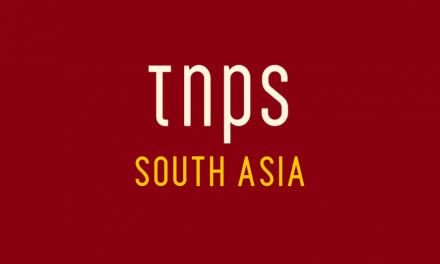With one billion internet users it’s no surprise that China is ahead of the game. Publishers elsewhere around the world have much to learn from BIBF 2021.
The imminent Beijing International Book Fair (August 25-29) is a hybrid event with some domestic publishers participating in-person, but with an international focus offered online for the second year running, and almost certainly not for the last time, whatever the trajectory of the Pandemic in 2021-22.
One reason for that is that by now China will have over one billion people online, having started this year with 989 million internet users. Globally the world now has over 5 billion people online, and that’s huge market reach both within and beyond China’s borders that China’s publishers and other media operatives fully understand the value of.
Over at Publishers Weekly Teri Tan offers some invaluable insights into the China book market and in this post I’ll draw heavily on Teri Tan’s PW report to make points pertinent to this specific post, but do check out the PW post in full for a look at the bigger picture that is the beyond-massive Chinese book market.
Last year Beijing went virtual for the first time, and set the bar for other players with its year-long Smart BIBF programme, which in 2020 attracted 1,400 publishers, of which 580 were China-based. Per Tan’s report, 38,000 titles were uploaded for rights negotiations and in the ten months since the August 2020 event the Smart BIBF programme has already clocked over one billion views.
Across Pandemic Year 1 China’s book sales suffered, per OpenBook statistics, although we should be clear this counts only actual book sales, and does not attempt to count reader engagement through online reading, which as per past discussion here at TNPS is a parallel publishing/reading market of immense size.
Per OpenBook, via Tan:
The Chinese book market has shown signs of improvement in the first quarter of 2021. Data from OpenBook, a clearinghouse for publishing statistics in China, indicates that the book retail market expanded 18.6% compared to the same period in 2020. Online book sales and bricks-and-mortar channel sales have jumped 10.7% and 55.4%, respectively, during this period. (But the fact remains that China’s total book sales in 2020 fell 5.1%, to 97.08 billion yuan or $15.25 billion, due to the pandemic; in contrast, 2019 saw a jump of 14.4%). 2020 was the first time the market had a drop after two decades of growth and double-digit expansion since 2015.
But what most interests us here is how the aforementioned one billion internet users in China are driving the book market. Again, Teri Tan:
With pandemic-era restrictions still in place due to the emergence of new clusters in different parts of China, publishers are now focused on using new technologies and marketing tactics to attract readers. At the China Bookstore Conference held on March 30, for instance, the theme was about offering innovative reading services and building a reading community and consumer base online instead of relying solely on in-store promotional activities and book sales. Between automated/cash-less bookstores and online (and peer) recommendations via messaging and social media platforms such as WeChat, readers in China are used to mobile payment and online book purchase. TikTok, or Douyin as it is known in China, has emerged as the preferred tool for presenting new titles, especially children’s books.
Tan talks of a “physical bookstore renaissance” which he attributes to the declining influence of Amazon, Dangdang, and JD.
Gone are those hyper-growth years – roughly from 2000 to 2017 – when annual sales growth of up to 50% was the norm. And so these retailers are now parlaying (and monetizing) their logistical and marketing expertise to help bricks-and-mortar bookstores to put out live-streaming videos on selected titles, enhance their online presence, and boost traffic during this pandemic era.
In fact nothing here suggests decline of the online giants (Amazon has never been a serious player in this market). Hyper-growth by definition is unsustainable, so unless Tan has unstated evidence sales are actually reversing, then there’s nothing here to suggest the online giants are not holding their own.
And to the extent that growth in this sector is slowing we have nothing here to take into account the impact of online reading (as opposed to regular ebook sales, print book sales and library borrowing).
But what matters here to publishers within and beyond China’s borders is the shift to online engagement across all publishing sectors.
A reminder from Tan’s report as quoted above:
…Publishers are now focused on using new technologies and marketing tactics to attract readers (and) offering innovative reading services and building a reading community and consumer base online instead of relying solely on in-store promotional activities and book sales.
With one billion internet users it’s no surprise that China is ahead of the game. Publishers elsewhere around the world have much to learn from BIBF 2021.





